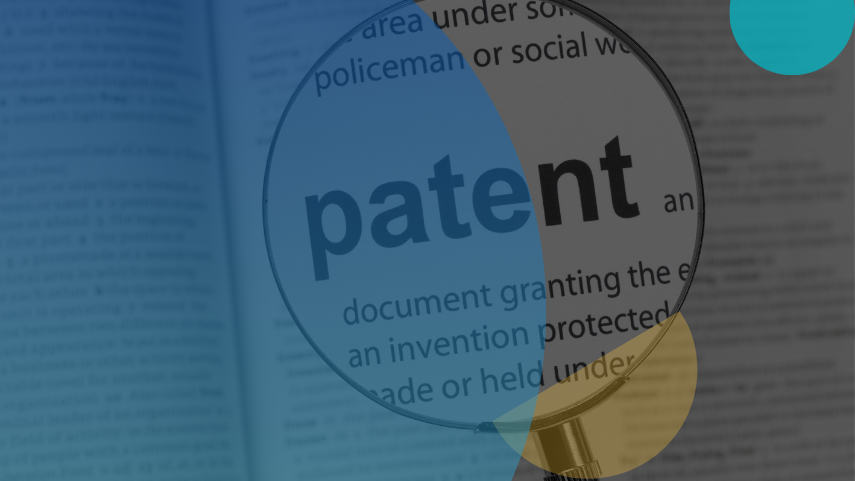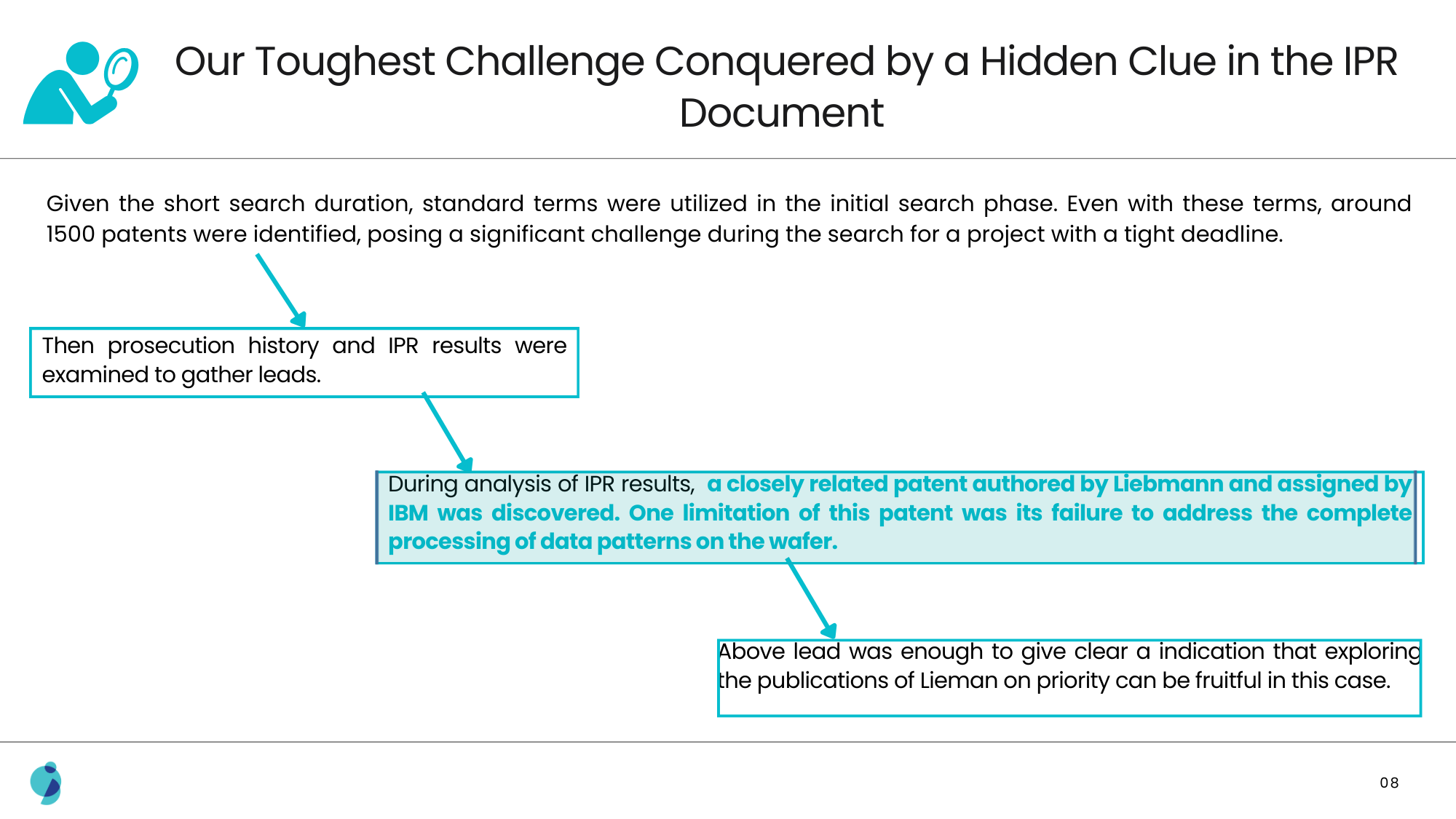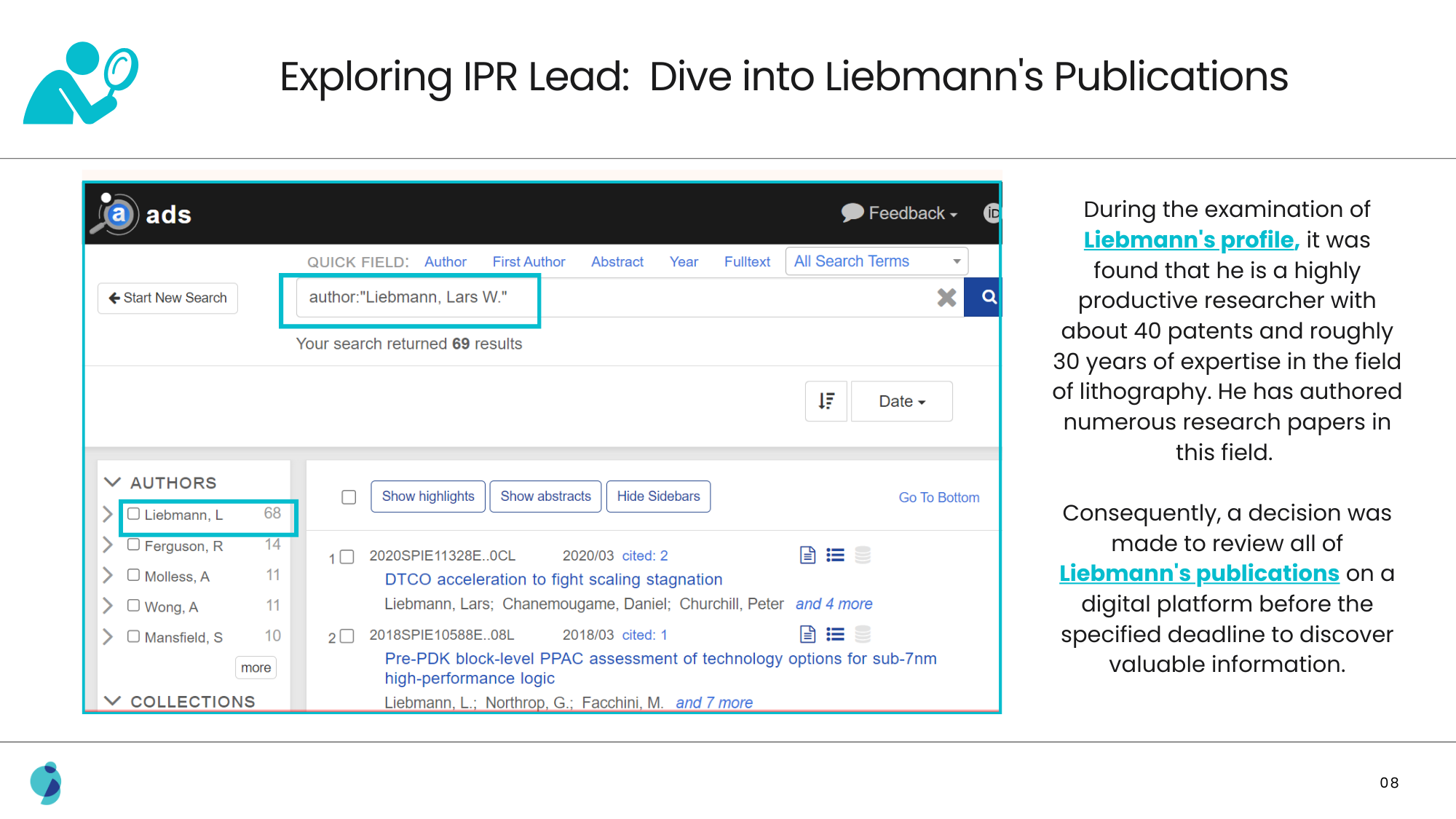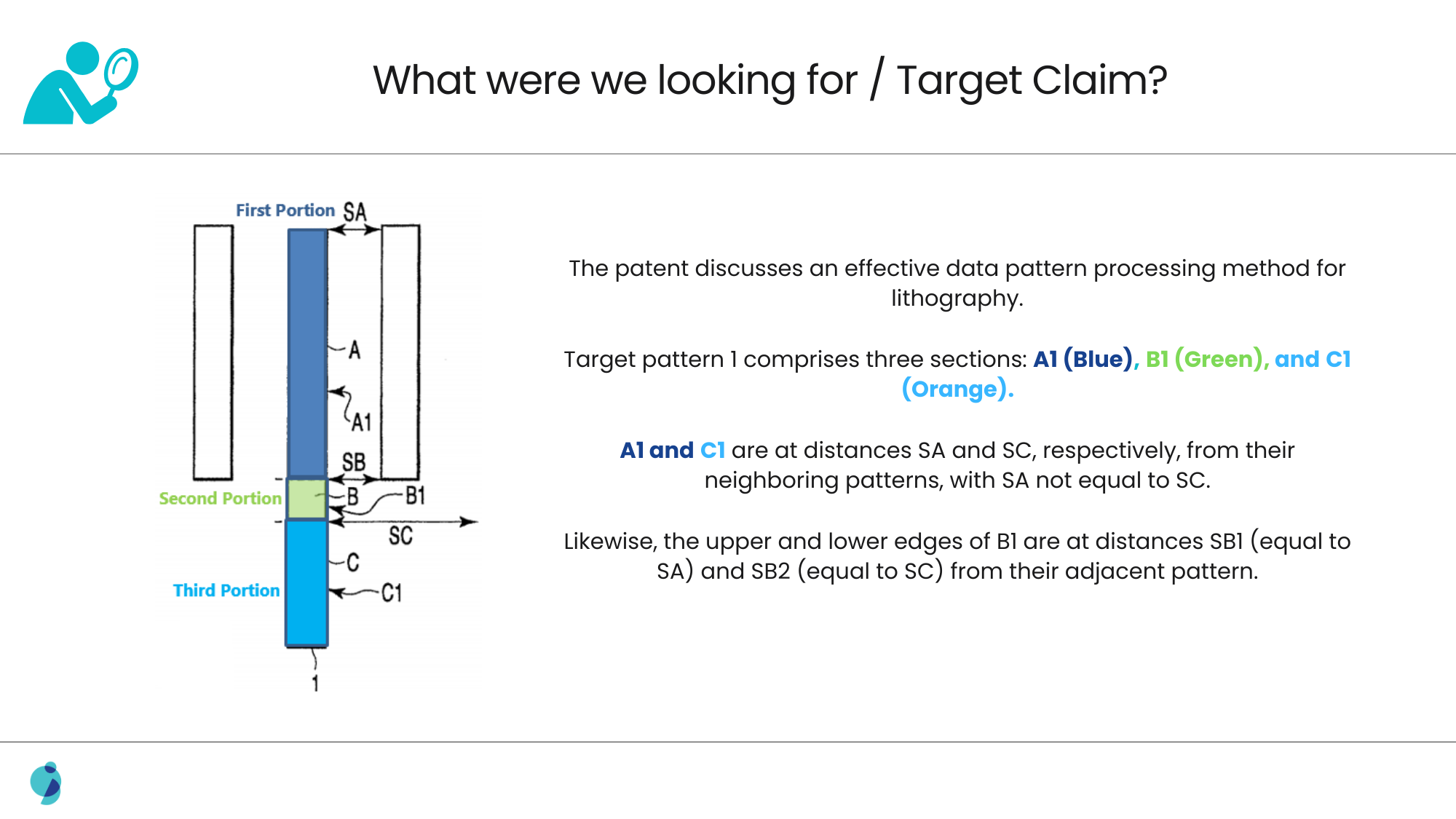
Value Delivered
The findings from this redirected approach led to uncovering prior art that significantly influenced the case outcome. The identified prior art provided a strong basis, steering the invalidation case toward a favorable resolution despite initial search challenges and robust IPR results.
Problems Solved
In a high-profile invalidation case, the challenge was to find compelling prior art despite facing nearly perfect Inter Partes Review (IPR) results and a robust prosecution history. After 60% of the search, top findings were not superior to the IPR results, suggesting a potential dead-end. The search also faced the difficulty of navigating scattered and fragmented information. Focusing on the work of inventor Liebmann, a prolific researcher with extensive expertise in lithography, did not initially yield superior results.
This situation raised concerns that all possible avenues might have been exhausted with diminishing returns.
Despite conducting a comprehensive invalidity search with over 2000 patent and non-patent literature sources from various potential areas, initial difficulties were encountered in identifying significant outcomes. However, by disembelling the problem statement of the subject patent, three areas were pinpointed where top-tier prior art was ultimately identified.



Solution Offered
A promising lead from the IPR results directed the search towards inventor Liebmann, who has around 80 patents and numerous contributions in lithography. Examination of Liebmann’s works indicated that another inventor, Mansfield, co-authored a significant portion of his documents. Further review of Mansfield’s patents uncovered significant prior art which addressed both independent and most of the dependent claims and included all required steps concerning the wafer. This prior art was also assigned to IBM.
Get the full case study to discover how GreyB’s innovative patent invalidity strategy leveraged IPR findings as a starting point.









